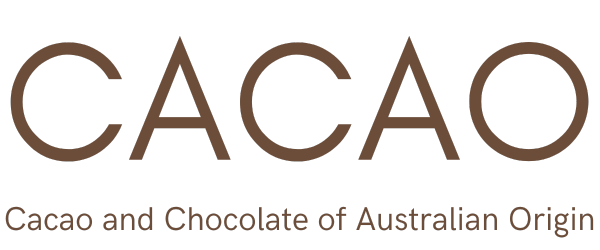Growing Cocoa
The Australia-Pacific landscape is characterized by a diverse range of ecosystems, including tropical rainforests, coastal plains, eucalypt forests, grasslands, and deserts. The region is also home to a number of unique flora and fauna species, many of which are found nowhere else on earth.
One plant that has the potential to thrive in this landscape is the cacao plant, (theobroma cacao) which is the source of chocolate. While cacao has traditionally been grown in the tropical regions of Asia, Africa and South America, there is increasing interest in growing the crop in the wet tropics of Australia and the Pacific islands.

Australian Climate
There are a number of reasons why cacao is well-suited to this region. Firstly, the climate is warm and humid, which is ideal for cacao trees. Secondly, the soil in some parts of the region is rich in minerals and nutrients, which can help produce high-quality cacao beans.
Cacao grown in the Australia-Pacific region can produce unique, premium chocolate.
This is because the flavor of chocolate is influenced by a number of factors, including the variety of cacao tree, the soil in which it is grown, the climate and agricultural practices.
Using cacao grown in this region, chocolate makers can produce chocolate with a distinct flavor profile that is different from chocolate made from cacao grown elsewhere.
Overall, cocoa production in Australia- Pacific is relatively small compared to other regions of the world. However, the cocoa produced is highly valued for its quality and unique flavor profiles.


Cocoa country facts


Major cocoa growing countries are Ivory Coast and Ghana (70% of production) followed by Indonesia, Nigeria, Brazil, Cameroon and Mexico where they have low labour costs and limited capital investment.
Pacific countries that grow cocoa are PNG, Solomon Islands, Vanuatu and Fiji – countries where Australia funds development projects.
In Australia, cocoa is grown in Far North Queensland, in a coastal strip between Tully and Mossman including locations such as Mission Beach and Shanonvale (near Port Douglas), being a region with a suitable tropical climate. The cocoa industry in Australia is relatively small and focused on producing high-quality cocoa beans for the specialty chocolate market. Australian cocoa growers are high cost producers who consequently must focus on growing high yielding and high quality cocoa trees, using environmentally friendly pest management and efficient productivity.
Cocoa farming in the Pacific is often done on a small scale by subsistence farmers. The cocoa produced in the Pacific is known for its unique flavor profiles and is highly valued by the chocolate industry. However, farmers in the Pacific face challenges such as limited access to markets, reliable and cost-effective transportation, lack of infrastructure, and climate change.
Cocoa growing in Australia and the Pacific has benefitted from the support of Agri Futures Australia (https://agrifutures.com.au), the Queensland Department of Agriculture and Fisheries Centre for Wet Tropics Agriculture (South Johnstone Research facility) and the ACIAR projects funded by the Australian Department of Foreign Affairs and Trade.
“
The Australian Cocoa Strategic Research Development & Extension Plan 2022-2027 funded by Agri Futures Australia concluded:
‘A growing appetite for chocolate drives global demand for cocoa, along with uses in cosmetics and some industrial applications.
Produced primarily by smallholder farmers in developing nations close to the equator, cocoa is a labour intensive tropical tree crop. Cocoa pods are hand harvested and beans are extracted from pods for fermentation and drying to produce unique flavour characteristics.
A small Australian cocoa industry emerged following feasibility studies backed by the government, RIRDC and Cadbury that began in 1999. Growers have expanded into value-added chocolate making and tourism ventures or developed their cocoa plantations as a farm diversification.
Productive, labour efficient growing systems producing reliably high quality, differentiated cocoa have the potential to grow a viable, vibrant cocoa industry for northern Australia and the region.’
